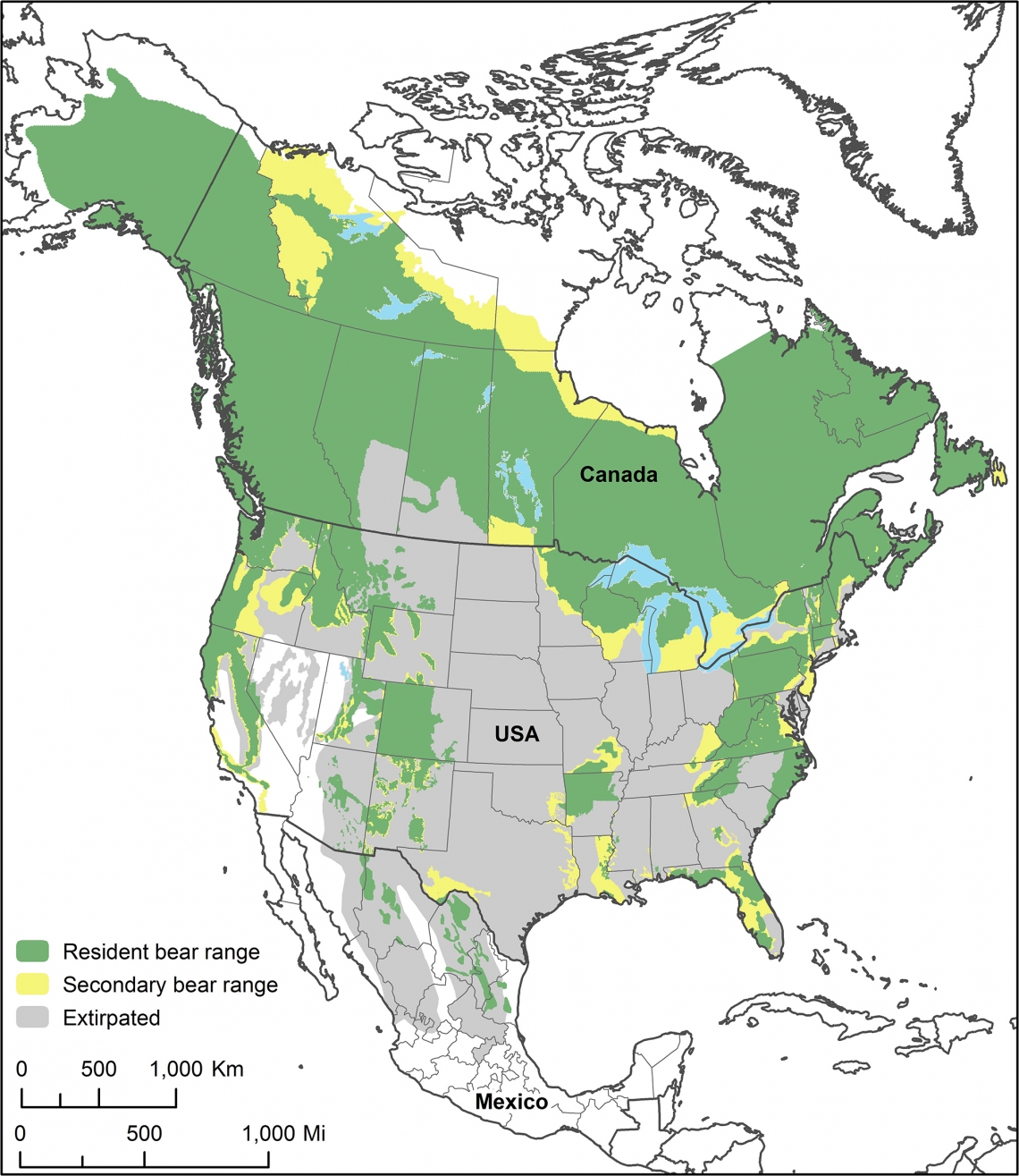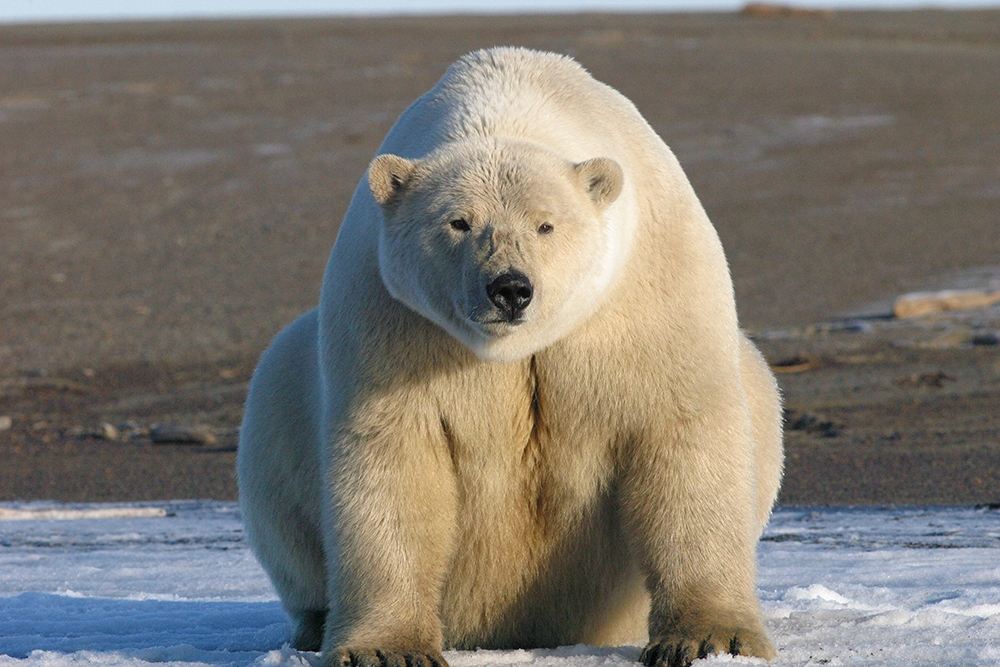Distribution: This species occurs in only 3 countries: Canada, United Sates, and Mexico. There is no evidence of black bears ever occurring in southern Mexico or Central America. Today resident populations range southward to 23°14´ N, and northward to 69°29´ N (from subtropics to subarctic). Historically their range northward has been limited by lack of berry-producing plants. Factors limiting the southward extent of the range are unclear, as historically there was ample forest, including oak trees. Vagrant bears have recently been observed farther north and also farther south (21°). The northward expansion is related to the warming climate, and the southward expansion to a burgeoning population in northern Mexico and forest protection efforts south of there.
They occur along the coastlines of the Atlantic Ocean, Gulf of Mexico, Pacific Ocean, and Gulf of Alaska, but not the treeless coastal areas adjacent to the Bering Sea or Arctic Ocean. They also occur on many islands off the coasts of Alaska and British Columbia (including large populations on Vancouver Island and Haida Gwaii archipelago), and on the East coast are found on Newfoundland (but were extirpated from Prince Edward Island and Anticosti Island, Quebec).

American black bear_U americanus_range map Bear Specialist Group_B Scheick
Range countries, states and provinces:
Canada:
· Resident (12 provinces and territories): Alberta, British Columbia, Manitoba, New Brunswick, Newfoundland & Labrador, Northwest Territories, Nova Scotia, Nunavut, Ontario, Quebec, Saskatchewan, Yukon
· Extirpated: Prince Edward Island (1927)
United States:
· Resident (41 states): Alabama, Alaska, Arizona, Arkansas, California, Colorado, Connecticut, Florida, Georgia, Idaho, Kentucky, Louisiana, Maine, Maryland, Massachusetts, Michigan, Minnesota, Mississippi, Missouri, Montana, Nevada, New Hampshire, New Jersey, New Mexico, New York, North Carolina, Ohio, Oklahoma, Oregon, Pennsylvania, Rhode Island, South Carolina, Tennessee, Texas, Utah, Vermont, Virginia, Washington, West Virginia, Wisconsin, Wyoming
· Vagrant (8): Delaware, Indiana, Illinois, Iowa, Kansas, Nebraska, North Dakota, South Dakota
· Never occupied: Hawaii
México:
· Resident (6 states): Chihuahua, Coahuila, Durango, Nuevo Leon, Sonora, Tamaulipas
· Vagrant (5 states): Aguascalientes, Hidalgo, Jalisco, Querétaro, San Luis Potosi, Zacatecas
· Extirpated: Nayarit, Sinaloa
Extirpation: American black bears have not been extirpated in any historic range country. In Canada, the only provincial extirpation was Prince Edward Island (last individual killed in 1927). They were previously extirpated from several U.S. states, some of which were recently recolonized (Kentucky, Missouri, Nevada, Ohio, Oklahoma, Rhode Island, Texas), naturally or with human assistance, from neighboring states. Other extirpated states have reported occurrence of a few vagrant bears, but no established population yet. They were extirpated in some southern México states, but the southern historic range limit is ill-defined.
Elevational range: This species is found near sea level to 3,500 m, but typically does not live above treeline.
Overlap with other bear species: American black bears overlap and compete with grizzly (brown) bears in the western part of their range. However, coastal Pacific islands are inhabited by one species or the other, possibly indicating that they can exclude each other, depending on the circumstances. American black bears have long overlapped with polar bears in coastal areas of James Bay and Hudson Bay in Ontario, Manitoba and Québec. With climate change, there are reports of American black bears extending their range farther north (near Hudson Strait in northern Québec, and southeastern Nunavut near the Hudson Bay coast). Recent records of some grizzly bears in northern Manitoba indicate that all three North American bears overlap there.

Brown bear_U arctos_ British Columbia Canada_J Beecham

Polar bear_U maritimus_ Alaska_on shore_E V Regehr